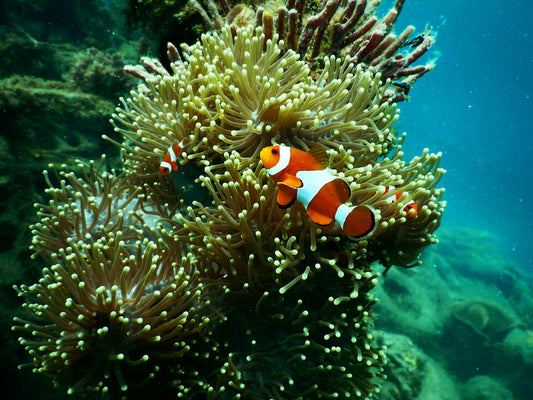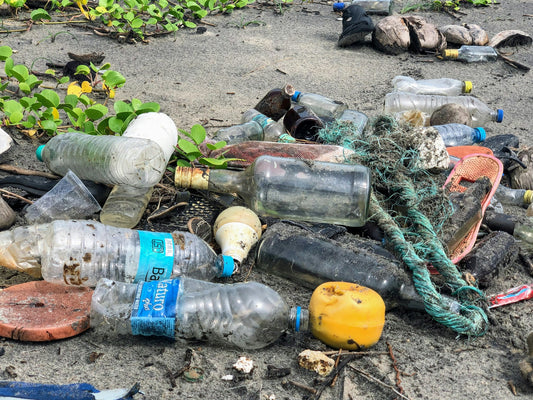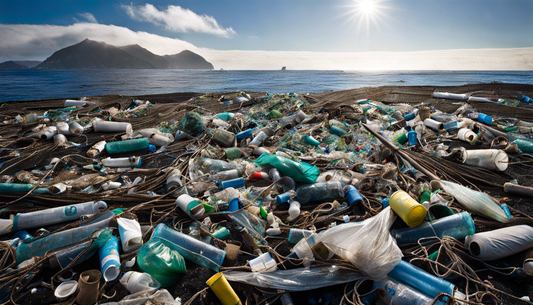Share
Like most sea animals, dolphins are under serious threat due to plastics in our oceans. About 300,000 marine animals, including dolphins, die every year from the effects of plastic pollution.
These smart and endearing animals are in grave danger from plastic pollution. Numerous individuals become entangled in plastic or consume plastic objects, often resulting in injury or death.
The amount of plastic we have let into our oceans is staggering. Every year, 14 million tons of plastic waste end up in the sea, which is dangerous for all types of marine life.
Dolphins are also a species most endangered by plastic pollution as they are apex predators.
Some species can eat plastic products, thinking that they are food items, while others may get trapped in fishing nets or other waste materials and drown, choke, or starve to death.
In this blog post, we explore how plastic pollution is killing dolphins and other marine animals.
How Plastic Pollution Affects Dolphins?

Friendly and intelligent, dolphins, with their grace and elegance, represent the beauty and grandeur of the seas.
However, beneath the surface lies a grim reality: plastic pollution is a severe problem that affects the existence of dolphins in the ocean.
Understanding how plastic pollution impacts dolphins is important for effectively addressing this emerging issue in conservation.
1. Entanglement
Like many sea creatures, dolphins can become easily caught in fishing nets, plastic bags, and other forms of marine litter. This entanglement may result in serious injury, limited mobility, or death in some cases.
There have been numerous reports about dolphins and whales who suffocate, because they are entangled in plastic.
2. Ingestion
Ingestion is one of the most dangerous effects of plastic pollution that is hard to combat. The dolphins are frequently confused by the appearance of plastic litter and end up eating plastic bags, bottles, and fragments.
This has a very negative impact on their health and can lead to an excrutiating death.
3. Chemical Contamination
In addition to the physical negative impact of ingesting plastics, the chemicals found in plastics pose risks to dolphins.
Some common chemicals found in plastics include phthalates, bisphenol A (BPA), and flame retardants, which can dissolve into surrounding seawater.
4. Microplastics
Microplastic, plastic that has been broken down into pieces smaller than 5mm in size, has been found to be dangerous, especially to dolphins.
These particles are small enough to reach the water column and sediment, where they are eaten by prey organisms, which in turn are eaten by dolphins.
In a study, 10,639 microplastic fibers were detected in the gastrointestinal tracts of 25 marine animals, including dolphins, seals, and turtles.
How Plastic Pollution Affected The Population of Dolphins?
As the problem of plastic waste in our seas remains serious, dolphins are exposed to a new danger that threatens their future existence.
The impacts of plastic pollution on dolphins are a series of interrelated issues that threaten their survival and welfare.
A direct effect of pollution on the dolphins is the possibility of a decline in population size. According to research, the population of river dolphins has declined by 73% as of 1980’s.
Dolphins are at the top of many marine food chains and are very important in regulating the balance of ecosystems.
However, as plastics continue to populate their environment, dolphins experience higher death rates resulting from entanglement, ingestion, and related health issues.
Takeaway
It’s not possible to identify the exact number of dolphins that die annually due to plastic pollution. However, research has shown that about 56% of our planet’s dolphins have consumed plastic.
We can help these creatures by minimizing the use of plastic, recycling everything possible, and participating in beach cleanup campaigns.
However, stringent policies against plastic pollution must be developed globally, and all countries should contribute.
What else can we do to protect these beautiful animals? Feel free to leave a comment below.
We hope you enjoyed this article. If you want to read more like this, make sure to check out our Blog and follow us on Instagram. If you are interested in truly sustainable products, check out our Shop.








